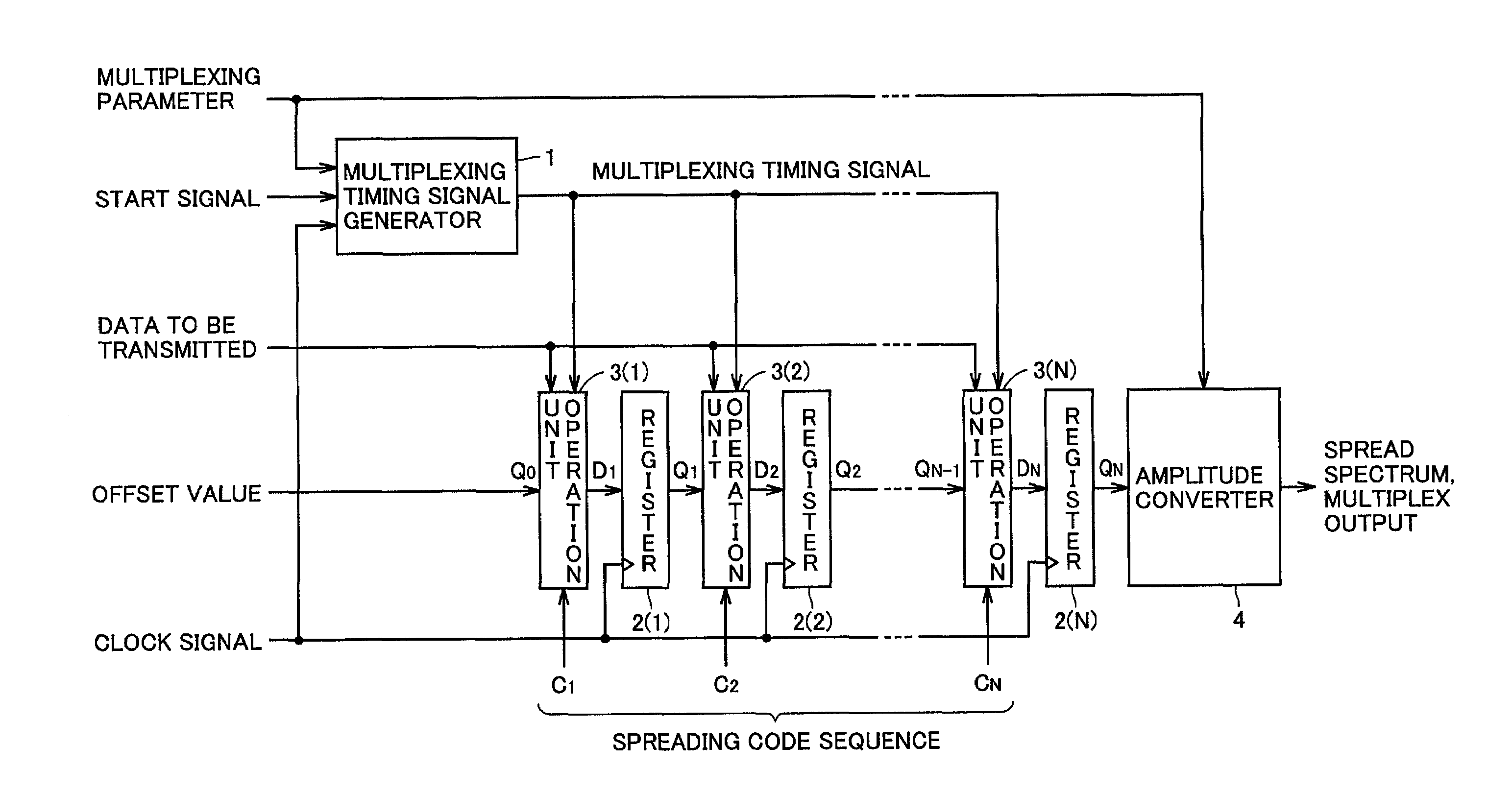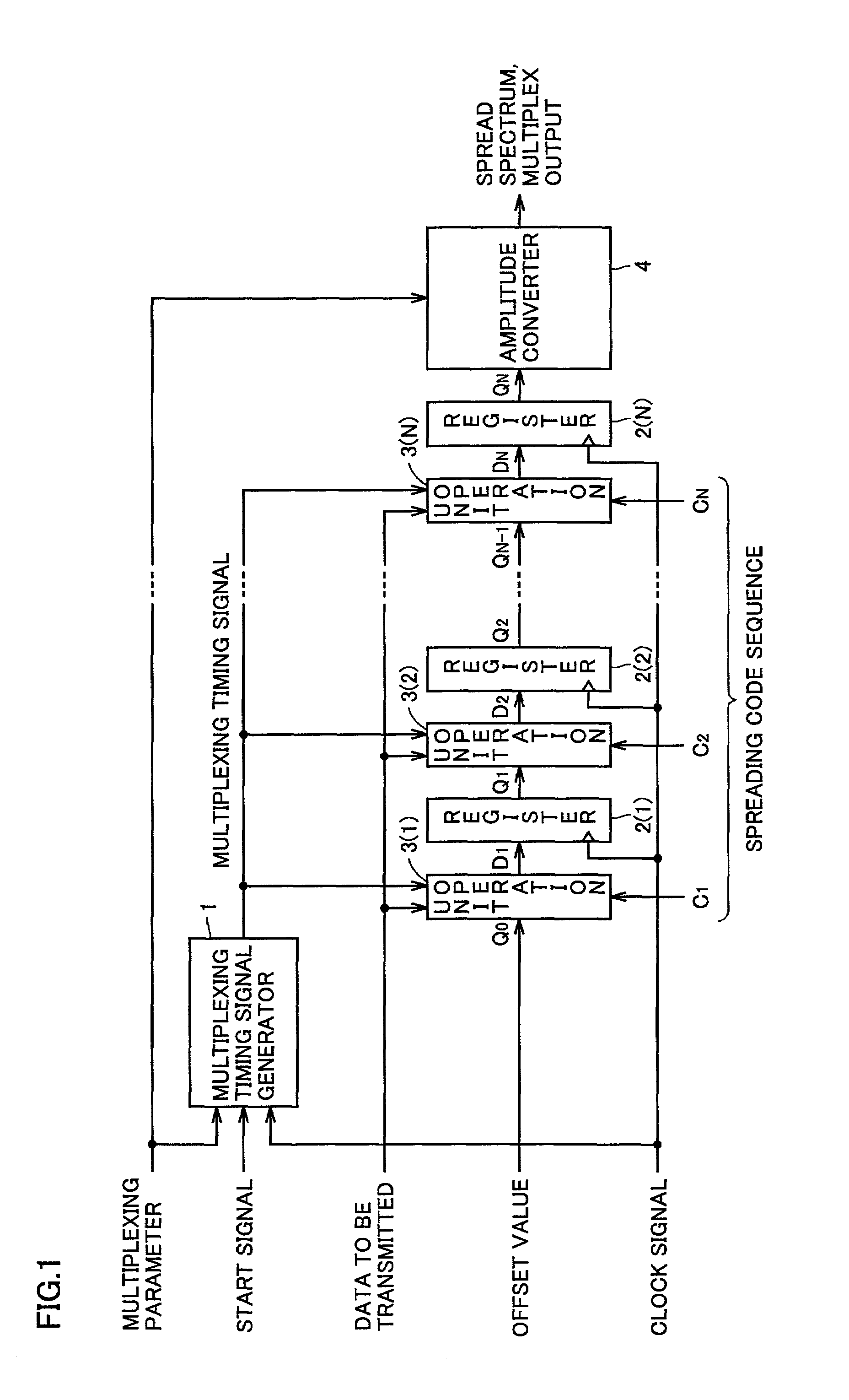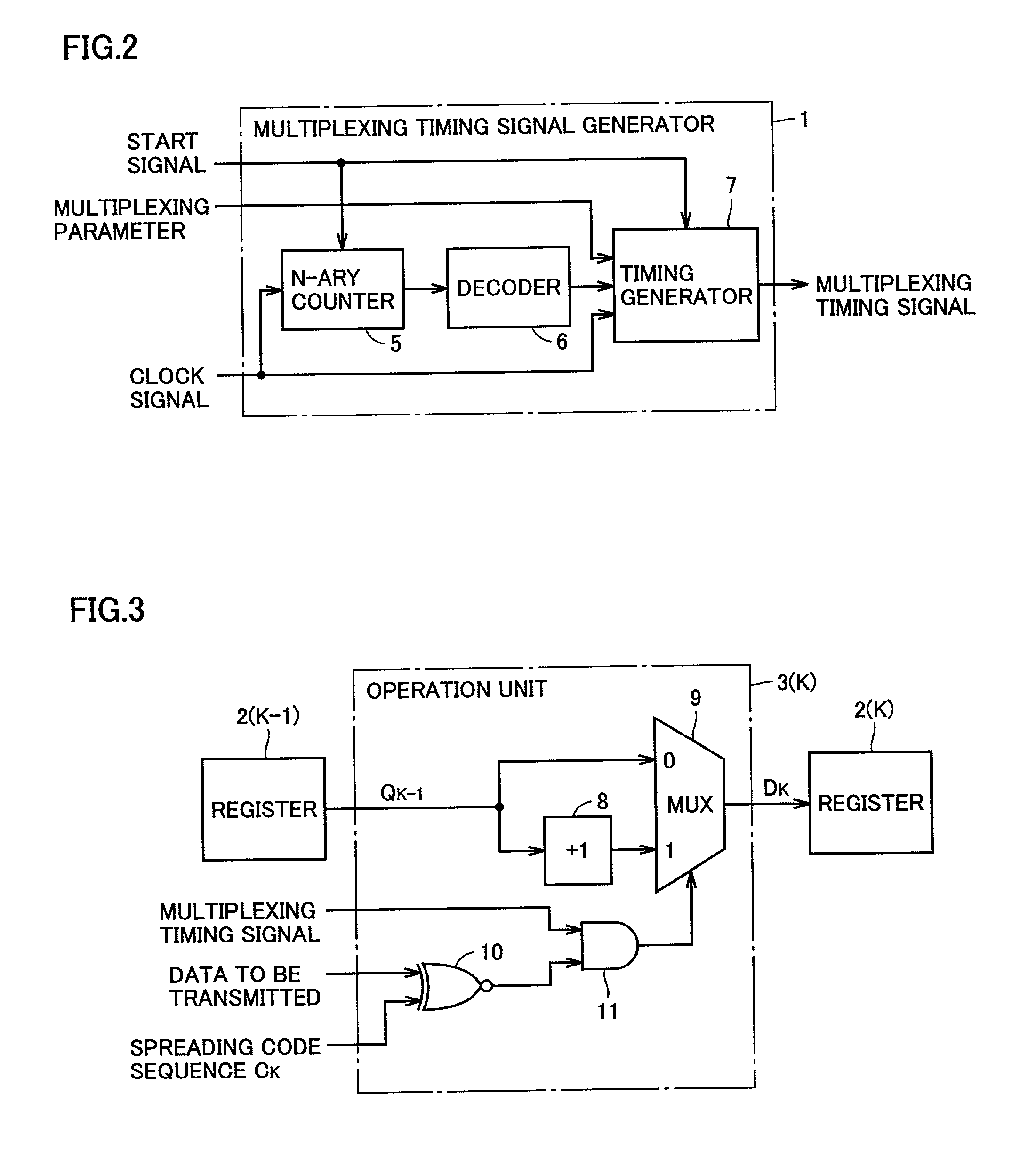Transmitter for spread-spectrum communication
a technology of transmission transmitter and spread spectrum, applied in the direction of multiplex communication, orthogonal multiplex, electrical apparatus, etc., can solve the problems of complex control, data error in demodulation, complex circuit configuration, etc., and achieve the effect of simple circuit configuration and simple control
- Summary
- Abstract
- Description
- Claims
- Application Information
AI Technical Summary
Benefits of technology
Problems solved by technology
Method used
Image
Examples
first embodiment
[0059]FIG. 1 is a block diagram illustrating a spreading and multiplexing circuit in a spread spectrum communication transmitter of the present invention.
[0060]In FIG. 1 the spreading and multiplexing circuit includes a multiplexing timing signal generator 1, registers 2(1)–2(N), operation units 3(1)–3(N), and an amplitude converter 4. Multiplexing timing signal generator 1 starts, as timed by a start signal, and is synchronized with a clock signal having a period equal to a chip rate of the spreading, to generate and output a multiplexing timing signal indicating a timing of effecting a multiplexing process. The multiplexing timing signal is generated from a multiplexing parameter representing one or both of information of a selected number of signals in multiplexing and information of a selected pattern of a timing of the multiplexing. N registers 2(1)–2(N) each hold a result of a spreading and multiplexing operation obtain at each chip location, wherein N represents a length of a...
PUM
 Login to View More
Login to View More Abstract
Description
Claims
Application Information
 Login to View More
Login to View More - Generate Ideas
- Intellectual Property
- Life Sciences
- Materials
- Tech Scout
- Unparalleled Data Quality
- Higher Quality Content
- 60% Fewer Hallucinations
Browse by: Latest US Patents, China's latest patents, Technical Efficacy Thesaurus, Application Domain, Technology Topic, Popular Technical Reports.
© 2025 PatSnap. All rights reserved.Legal|Privacy policy|Modern Slavery Act Transparency Statement|Sitemap|About US| Contact US: help@patsnap.com



